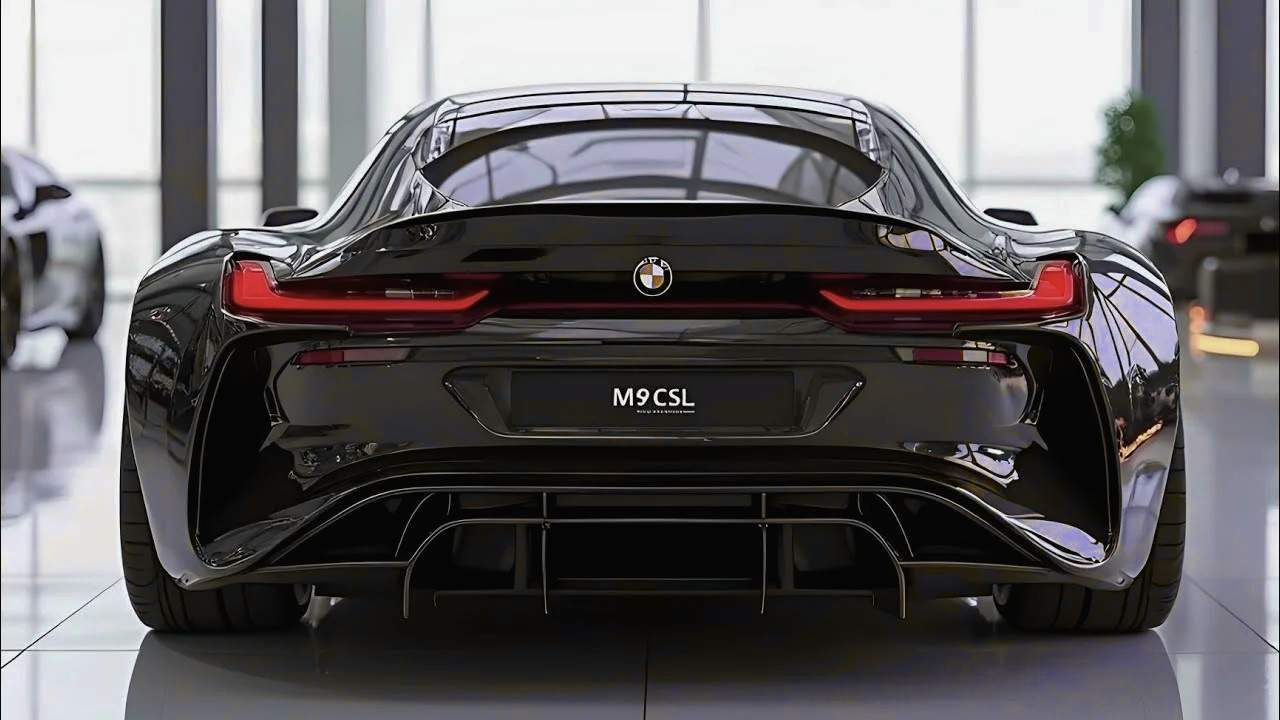The 2026 BMW M10 Supercar is a bold leap into the future of automotive design. BMW has long been known for its elegant yet aggressive styling, and the M10 takes that reputation to new heights. The car’s silhouette is low and wide, with flowing lines that suggest speed even when standing still. The front fascia features a reimagined kidney grille, now more sculptural and integrated into the bodywork. Aerodynamic efficiency plays a central role, with active air channels and a rear diffuser that not only enhance performance but also add to the visual drama.
Inside, the cabin is a blend of luxury and motorsport inspiration. Carbon fiber, Alcantara, and brushed aluminum dominate the interior, creating a cockpit that feels both premium and purposeful. The driver-centric layout ensures that every control is within reach, and the digital interface is intuitive, responsive, and customizable. Ambient lighting and sculpted seats add comfort without compromising the car’s racing DNA.
When did BMW unveil the M10 and what was the reaction?
BMW officially unveiled the M10 Supercar in late 2025, and the automotive world responded with a mix of surprise and admiration. For years, enthusiasts speculated whether BMW would enter the supercar segment with a true flagship, and the M10 answered that question with authority. The launch event showcased the car’s capabilities through dramatic visuals and live demonstrations, including a blistering acceleration run that highlighted its 0–100 km/h time of just 2.6 seconds.
Critics praised BMW for not only delivering raw performance but also maintaining the brand’s commitment to driving pleasure. The M10 wasn’t just about numbers—it was about emotion, connection, and the thrill of being behind the wheel. Social media buzzed with excitement, and pre-orders surged as collectors and enthusiasts scrambled to secure one of the first units.
How does the M10 achieve its staggering performance?
At the heart of the BMW M10 lies a hybrid powertrain that combines a twin-turbocharged V8 engine with an advanced electric motor system. This setup produces a combined output of 850 horsepower, allowing the car to rocket from 0 to 100 km/h in just 2.6 seconds. The electric motor provides instant torque, while the combustion engine delivers sustained power and a visceral soundtrack.
BMW’s engineers have fine-tuned the M10’s chassis to handle this immense power. The car features adaptive suspension, rear-wheel steering, and a torque-vectoring all-wheel-drive system that ensures maximum grip and agility. Lightweight materials such as carbon fiber and aluminum reduce overall mass, contributing to both speed and handling precision.
The transmission is a dual-clutch unit that shifts with lightning speed, and the braking system includes carbon-ceramic discs for fade-free stopping power. Together, these components create a driving experience that is both exhilarating and confidence-inspiring.
What is the role of technology in enhancing the M10’s driving experience?
Technology in the M10 goes beyond performance—it enhances every aspect of the driving experience. The digital dashboard offers real-time telemetry, navigation, and customizable displays. A heads-up display projects key information onto the windshield, allowing drivers to stay focused on the road. The infotainment system supports voice commands, gesture controls, and seamless smartphone integration.
Safety features include adaptive cruise control, lane-keeping assist, and collision avoidance systems. However, BMW has ensured that these aids do not dilute the car’s engagement. Drivers can adjust the level of assistance or disable it entirely for a more purist experience.
One standout feature is the M Mode selector, which allows drivers to switch between various driving profiles. From Comfort to Sport Plus, each mode adjusts throttle response, suspension stiffness, and steering feel to suit the driver’s mood and environment.
When will the M10 be available and what are the expected variants?
BMW plans to begin deliveries of the M10 in early 2026, with production limited to maintain exclusivity. Initially, the car will be offered in a single high-performance variant, but rumors suggest that additional versions may follow. These could include a track-focused edition with stripped-down weight and enhanced aerodynamics, as well as a convertible model for those who prefer open-air driving.
Customization will be a key part of the ownership experience. Buyers can choose from a wide range of exterior colors, interior trims, and performance packages. BMW’s Individual program will allow for bespoke configurations, ensuring that no two M10s are exactly alike.
How does the M10 compare to other supercars in its class?
The BMW M10 enters a competitive field that includes names like Ferrari, Lamborghini, and McLaren. However, it distinguishes itself through a unique blend of German engineering, hybrid innovation, and driver-focused design. While some rivals may offer more exotic styling or higher top speeds, the M10 excels in delivering a balanced and engaging driving experience.
Its acceleration is among the quickest in the segment, and its handling is tuned for both road and track use. The hybrid system not only boosts performance but also improves efficiency, making the M10 a more practical choice for daily driving. In terms of build quality and interior refinement, BMW’s attention to detail gives it an edge over many competitors.
What is the legacy BMW hopes to build with the M10?
With the M10, BMW aims to redefine what a supercar can be. It’s not just about speed—it’s about connection, innovation, and the joy of driving. The M10 represents the pinnacle of BMW’s M division, a culmination of decades of motorsport heritage and technological advancement.
By entering the supercar arena, BMW sends a clear message: the brand is ready to compete at the highest level, not just in terms of performance but also in delivering a complete and emotionally resonant driving experience. The M10 is more than a car—it’s a statement, a dream realized, and a glimpse into the future of driving.



